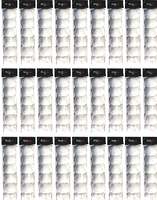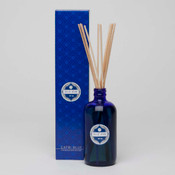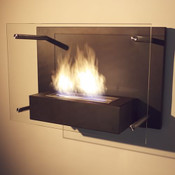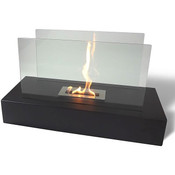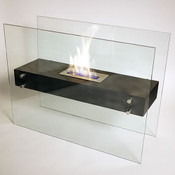- CLICK HERE TO ORDER RIGUAD CANDLES AT THE LOWEST PRICES!
-
About Jean-Baptiste Rigaud, a great French perfumer of the 19th century
Following studies in chemistry in his native Auvergne, Jean-Baptiste Rigaud came to Paris in 1852 to experience his passion and reveal the artist within him.
He made his first steps in the Paris business milieu and in the world of perfumery with a renowned pharmacist, Monsieur Grimault.
With passion and determination, guided by his imagination, he resolved to travel the world in order to find new and undiscovered scents in exotic lands, soon realizing the fascination and the emotion these unexploited riches could awaken in Europe’s fine ladies.
-
Back in Paris at a time when the French aristocracy was experiencing a real infatuation with everything English, Jean-Baptiste Rigaud opened his perfumery in the rue Vivienne, under the name “Parfumerie Victoria” as a tribute to the Queen of England.
The names of the scents he purveyed to his clientele had a decidedly English sound: “Kiss Me Quick,” “Jockey Club,” “Bouquet Victoria.” He began what was to be a brilliant career by creating rare exotic perfumes, orienting his business along a hitherto unknown path.
He explained his approach in these terms:
“In founding a perfumery house, my aim was higher than simply to engage in the ordinary commerce of perfumery. (…) I therefore hit upon the idea that introducing a new aromatic plant would be like adding a new note to my keyboard, as it were, and that only on that condition would I be able to create new products bearing the stamp of originality.”
-
A perfumer of genius and a creator of trends
Among Jean-Baptiste Rigaud’s first major innovations was his essence of Ylang-Ylang in 1860, which earned the nicknames “Fleur des Fleurs” and “Roi des Parfums,” won over the entire elegant privileged class of the period, and immediately ranked the house of Rigaud among the great Paris perfumeries.
Another exotic flower essence was added to Jean-Baptiste Rigaud’s creative achievements – the Kananga flower of Japan. Charmed by the mysterious legend of this flower, Jean-Baptiste made it a brand in its own right, symbolized by a Japanese girl holding a Kananga branch in her right hand. “Eau de Kananga,” created in 1869, rapidly became a great success throughout Europe and as far away as the United States of America.
International fame came rapidly, and Jean-Baptiste Rigaud opened warehouses and offices around the world, as for example in New York in 1868.
Attentive to current events and fashion trends, his inspiration led him to create evocative fragrances dedicated to the major personalities of the time. As a tribute to France’s imperial family, he created “Impérial Bouquet,” a portrait in perfume of Emperor Napoléon III, Empress Eugénie and Prince Eugène.
Tuned to the music of his time, with the operettas of Offenbach triumphing on the Paris stage, he created a series of amusing compositions inspired by masterpieces like La Vie Parisienne, La Belle Hélène, and La Biche au Bois. He dedicated his perfume “Miranda Bouquet” to the actresses and singers of the Théâtre Vaudeville and Opéra Comique.
-
Rigaud, perfumer to royalty
Following the fall of the Second Empire, the Franco-Prussian War and the siege of Paris in 1870, Jean-Baptiste Rigaud re-launched his perfumery house. He became official supplier to Her Majesty the Queen of the Netherlands, then to the royal family of Greece, and finally perfumer-distiller to the Russian imperial court.
Diversifying his business into soap making and skin creams, he continued his expansion with the acquisition of two perfumery houses that were well known to the wealthy Paris bourgeoisie – the Parfumerie du Dr. Cazenave and Parfumerie Naquet, highly sought after for their exclusive production of oil of Macassar.
The bourgeoisie of all Europe, when visiting Paris, crowded to discover the marvels and oddities on view in the magnificent perfumery in the rue Vivienne.
Here is what an American press correspondent of the time wrote:
“All present greatly admired the artistically arranged show window, the Japanese Kananga and the most fragrant perfumes, in etched crystal flacons in rich cases in elegant shapes of the most exquisite taste …”
-
From the Faubourg Saint-Honoré to the rue de la Paix
In 1899, under the name “Veuve Rigaud,” Jean-Baptiste’s widow decided to continue his work after his death in 1898. She brought a new, feminine and modern style to the luxury perfume salon she opened in 1902 in Paris’s rue du Faubourg St Honoré. The rose-and-white lacquered salon was admirably decorated with Louis XVI mirrors and furniture. Mahogany display cabinets presented original flacons in their graceful cases, set off by precious ribbons tied by expert fingers.
Her son Henri Rigaud joined the company and took advantage of the advances made in chemistry to create successful new fragrances in the tradition of the great master perfumers.
With his new perfume “Camia” in 1906, Henri Rigaud joined the first rank of perfumers to the elite. Luxuriously presented in a satin case in the Empire style, the perfume soon garnered the most flattering expressions of appreciation, including from Her Majesty the Queen of England.
In 1910, the rue de la Paix was the meeting place for all that was elegant, the center of the luxury trade, and the reflection of Parisian taste. Rigaud opened a shop there, decorated in the Empire style, with a white marble façade to set off the artistically designed crystal flacons and their luxurious cases.
The house of Veuve Rigaud provided perfumes to the greatest female celebrities of the day, actresses and journalists. The perfumes often took their names from celebrities of the Belle Epoque, or paid homage to them. The singer Mary Garden, greatly in vogue in the United States, lent her name to one perfume.
Rigaud also launched “Vincitor,” a men’s fragrance that was immediately adopted by the great athletes of the day as a tribute to the aviator Louis Blériot, who had just crossed the Channel.
-
“Un Air Embaumé,” Henri Rigaud’s immense success
In 1914, Henri Rigaud became sole proprietor of the business, whose name then became simply “Rigaud.” For the occasion, he launched the famous perfume “Un Air Embaumé.” This subtle fragrance of remarkable finesse and distinction, delicate and persistent, was an overpowering success; 30 years after its creation, its users were still faithful to it.
To illustrate the advertisements, the photographer Mady’s portrayed Mlle Fabrice, kneeling respectfully before a perfume bottle, in an image that was particularly evocative of the voluptuous sensation awakened by the fragrance of this exquisite perfume.
“Un Air Embaumé” even inspired poets; Elie Brachet wrote:
“(…) Dans Un Air Embaumé qui grise, Les jours coulent si tendrement Qu’on croit entendre dans la brise L’amour chanter pieusement“(…) With the heady redolence of Un Air Embaumé Days pass with such tenderness That in the soft breeze one imagines one hears The voice of Amor devoutly singing.”
Other inspired creations contributed to the renown of the house of Rigaud: “Chypre de Rigaud,” “Un rêve,” “Parfum tendre” and “Vers la Joie.”
-
In 1925, on the death of Henri Rigaud, the house was taken over by Gustave Delage, the guardian of Henri’s children. Success continued to come, including with the perfume “Féerie,” which served as inspiration to the painter Jean-Gabriel Domergue in 1938 for a painting that is now famous, showing a nude woman amid a magical carpet of flowers.
The Second World War interrupted research into new molecules and slowed commercial development. The house still managed to open another shop in the rue François Premier in 1940.
-
Rigaud invents scented candles
After the war, Henri Rigaud’s son Mario, the great-grandson of Jean-Baptiste, took over the company. In 1957, he created the perfume “Eve Rêve,” which Louise de Vilmorin once called “the Fragrance of Paradise”. In the 1960s, his wife Viviane turned the boutique into a veritable private salon, like a boudoir where a great lady receives her peers. A lover of homes and interior decoration, blessed with unerring taste, Viviane Rigaud was also an innovator. With her husband, she was the creator of the first scented candle.
Mario Rigaud developed and patented an innovative wax formula. This was an original formula for a soft wax whose main characteristic was that it perfectly revealed the natural ingredients that make up the Rigaud perfumes and allowed them to be faithfully transmitted.
And that is how the Cyprès candle was born – dark green in color, presented in a container of hand-blown glass, tied with a red ribbon and with a silvered metal snuffer cap. It was the 1960s, and the Rigaud Cyprès candle was an international success. The scent of the Rigaud candle soon became the height of chic in well-appointed homes, and even in the White House when Jacqueline Kennedy was its mistress.
Everyone was talking about Rigaud’s marvelous “Parfum Flamme.” The Cyprès scented candle has now become the universal standard for environmental fragrances.
Thus a whole new business, home fragrances, developed – a springboard for the ambition of the house of Rigaud to play on all the stops of the master perfumer’s organ to create subtle, refined compositions and offer exquisite luxury articles. Beginning in the 1970s, other creations – Cythère, Tournesol, Gardénia – were adding beauty to chic interiors the world over, and also became available in the form of fragrance sprays. The famous Rigaud candle, with its silver snuffer cap and delicately hand-knotted satin ribbon, was seen on the front pages of all the decorating magazines of the period.
-
Luxury and elegance: Rigaud home fragrances
At the turn of the 21st century, the market for body perfumes had become banalized and perfumers’ creativity was hampered by marketing constraints. But the house of Rigaud was giving the perfumer’s imagination free rein. Perpetuating the great tradition of French perfumery, new, daring and inventive compositions were created, with evocative names – Bois Précieux, Jardin d’Orient – in tribute to the fine perfumes of old.
The house of Rigaud continues to innovate, with a collection of natural environmental fragrance diffusers to explore new ways of softly and lightly scenting the home at every moment of the day or night.
The reputation of Rigaud candles has crossed all borders, and Rigaud is distributed in more than 30 countries around the world and in the major capitals of all continents.
Rigaud scented candles and home fragrances are on view on Fifth Avenue in New York, at Bergdorf Goodman along with the leading luxury perfumes at Clickyhome.Com, as a symbol of French elegance and refinement.
They also perfume the residencies of worldwide wealthy families, royal courts, large ministries, palaces and the living room of celebrities, such as King Juan Carlos I of Spain, Prince Albert of Monaco, Prince Charles of England, the Vatican, Ministry of Defence, Quai d’Orsay, the Hôtel Matignon, Hôtel du Palais in Biarritz, the Normandy Barriere and Royal Barriere hotels in Deauville, the Diana hotel in Carnac, Mister President Nicolas Sarkozy, Madam Carla Bruni-Sarkozy, Jackie Kennedy, Princess Lee Radziwill, Sylvie Vartan, Julien Clerc, Laurent Voulzy, and Patrick de Carolis.
And so the house of Rigaud remains faithful to the spirit of its founder, who himself expressed his calling with these inspired words:
“A great perfumer must be a veteran and a specialist. He is not only the one who succeeds in creating a fine perfume, but who also manages to transform into fragrance some of life’s most poetic manifestations.”
— Jean-Baptiste Rigaud
 Loading... Please wait...
Loading... Please wait...
